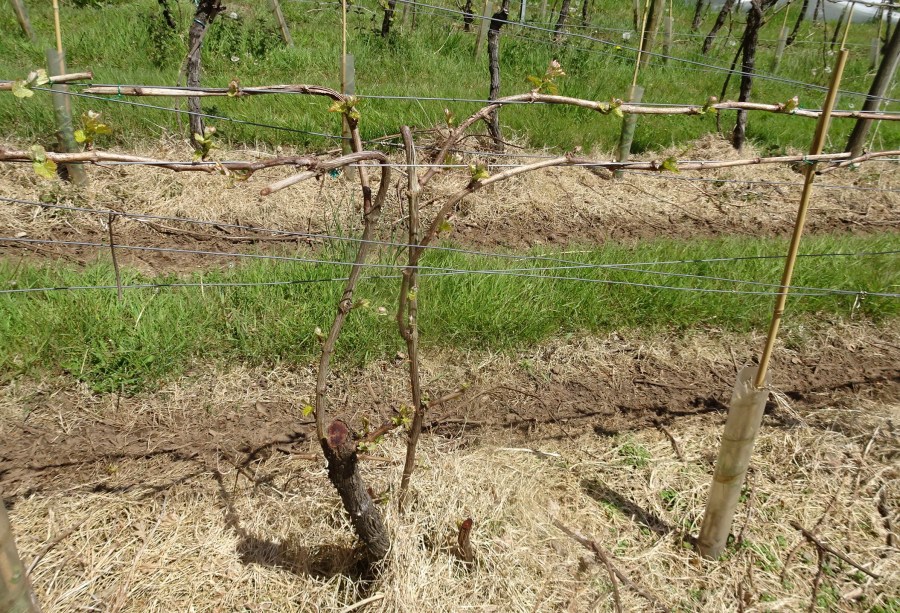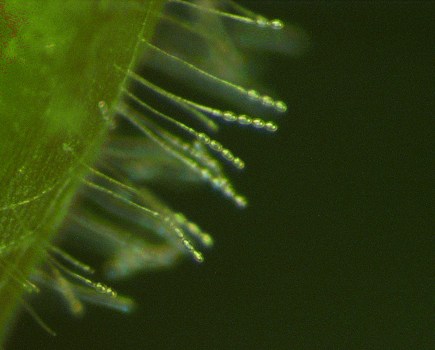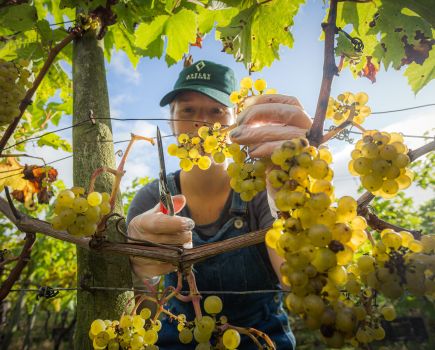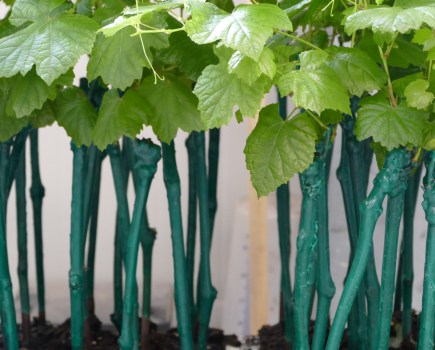I suspect that many UK vineyard owners would rather not think about trunk disease in their vineyards, it seems there are enough problems already. Yet, if the developing global experience is anything to go by, it seems that trunk diseases may develop as more of a problem than phylloxera across the worlds’ wine regions.
You might wonder how that might be true. Trunk diseases were hardly discussed twenty years ago, yet the ravages of phylloxera were known in Europe for more than 150 years. In fact, I am told by experts that trunk diseases occur everywhere in the world where there are vineyards, while phylloxera is much more limited. There is none in Chile for example, and in the majority of Australian vineyard regions.
There is a recognised treatment for phylloxera, whereas in the majority of the world’s vineyards trunk diseases are not recognised, let alone addressed by preventative management. Treatment for phylloxera consists of planting a vine grafted on resistant rootstock; paradoxically this is the big issue for trunk disease spread, as bench grafted vines are widely infected with trunk disease. Some say it is the elephant in the room for the trunk disease crisis.
How to manage trunk diseases?
Trunk diseases are widespread in UK vineyards, due mainly to fungi of the Botryosphaeria group, and Phomopsis; Esca and Eutypa may be seen in a few older vineyards. As well as occurring in grafted vines, infection can also come from other host plants in and around the vineyard. One symptom of Botryosphaeria trunk disease is failure to break bud in the springtime. Sometimes you can also observe poor growth during the summer, and the very first indication of disease is yellow colouration of leaves pre-harvest. However, perhaps the first observed sign will be a dead vine, and sometimes they occur in clusters, down or across the row.
Protection at pruning
While some growers may be content to delay treatment against trunk disease until the first deaths, the expert opinion is to begin with the first line of defence at the very first symptom, or preferably at the very first pruning. I suggest painting pruning wounds with a recommended product on the day of pruning, especially in damp weather. During rainy weather spores of trunk disease are spread and will infect fresh pruning wounds. Hopefully there will be more pruning wound products available for the 2019 pruning season than there were in 2018.
There is another simple trick which you can use to reduce infection of pruning wounds. When spur pruning, rather than making the pruning cut just beyond the second bud as is normally done, make it as close as possible to the third bud. This will leave an extra internode (some French viticulturists call them “snags”), an extra length of wood which dies off quickly, and has been shown to reduce infection of the spur.
Trunk renewal
The next stage of trunk disease prevention is the most critical, and that is to replace an infected trunk by a new healthy one. I would suggest that this be when the first sick or dead vines are seen in the vineyard. Growers should remember that vines do not just die, not even of old age. They are killed, and something is responsible for killing them.
Sometimes damage is evident which may suggest another cause, but if nothing else is evident then you might suspect trunk disease. Cut above and below the graft union, and at the base of the rootstock. Look for dark staining in the stem which indicates trunk disease. Healthy tissue is a pale green/cream colour with a pale brown central pith. You can also cut longitudinally through the graft union, and you may see staining both sides of the cut made by the grafting machine. This staining is due to fungal trunk disease.
Once you have confirmed trunk disease you can begin trunk renewal. This consists of training a sucker from lower down on the trunk to replace the existing infected trunk. Keep cutting down the trunk until you find no more staining, and then cut for a further 6 inches (15 cm). Make the final cut at about 45° angle and face it towards the south. This will keep the cut surface warmer and the cut will drain sap. Paint a protection chemical. This operation is normally carried out at winter pruning, but can be done up until flowering. This is often the procedure for young vines.
An alternative approach is to train a sucker (or two) while maintaining the current vine trunk and fruiting canes As the sucker grows you will need to attach it to the trunk for support, and it may be protected with a guard against herbicides. It will grow very quickly. If possible secure this new trunk on the south and sunny side of the canopy, so the leaves are better exposed to sunlight. Normally you will end up with about three feet of growth and you have the option of cropping it as a cane in the following growing season, or prune it at cordon height and train two fruiting canes for the following growing season. Now you are ready to remove the trunk, cut it just above the sucker at an angle and paint immediately for wound protection. Remove and destroy the old vine, do not leave it in the vineyard. Using this approach will enable the trunk to be renewed with little loss in production.
Now you have a new healthy vine with a trunk free from trunk disease. Obviously you should maintain wound protection and pruning to snags on this new healthy vine. Follow this up and practice trunk renewal on infected vines as they appear; eventually you will have a healthy new vineyard with rejuvenated trunks. You are removing a source of infection with every vine on which you perform trunk renewal.
Planting own-rooted vines
This is an option for UK growers, as phylloxera is not generally present, it is not a native insect. There are just a few vineyard locations where it is reported to exist in the UK. For one of these I am familiar with, the pest has come from the European nursery on grafted vines!
Own rooted vines are available now from a UK nursery. If you use them you need to maintain a sensible quarantine for your vineyard. Australia has achieved this for 150 years for most of its vineyards. I have seen a couple of old, own-rooted vineyards in the UK which are doing fine. Being isolated, as is customary here, helps maintain the quarantine.
Conclusion
UK vineyards are generally young by international standards. Trunk diseases are insidious, and damage may not show up until several years after infection. The UK climate, being wetter than most, encourages trunk disease spread, and one can expect five-year old vineyards to already show deaths. Ignoring early deaths is to invite further damage; spread will occur at an increasing rate.
For growers who wish to plant grafted vines, the guidelines presented here will allow you to save your vineyard from self-destruction as it ages. Remember that trunk disease is insidious, and it can be spreading without any apparent symptoms. One approach used in some vineyards is to count symptomatic vines in say the spring, and when this reaches a certain figure, say 30%, then to do trunk renewal (or total removal) on all the vineyard at once, for the sake of “uniform management”. This is the most unprofitable way to treat trunk disease. Some vines will have died, and others will still be as yet healthy. It is equivalent to treating gangrene in your arm by its removal when the disease moves from fingers to the wrist!
Economic studies performed in California and Australia are clear in their message. The earlier you start wound protection and trunk renewal the more profitable will be the vineyard, the less money you will lose. In the future we can expect the health of bench grafted vines from nurseries to improve, as they adopt more sanitary practices in mother vine plantations and the nursery and nursery fields. There is enough knowledge available now to greatly improve the situation; perhaps certification of nursery plants for trunk disease will be seen in the future, as exists for virus diseases now. Why not?
The procedures outlined here are sufficient to protect your vineyard. It is the individual grower’s decision whether or not to treat the problem in their own vineyard. To do nothing is foolish.




